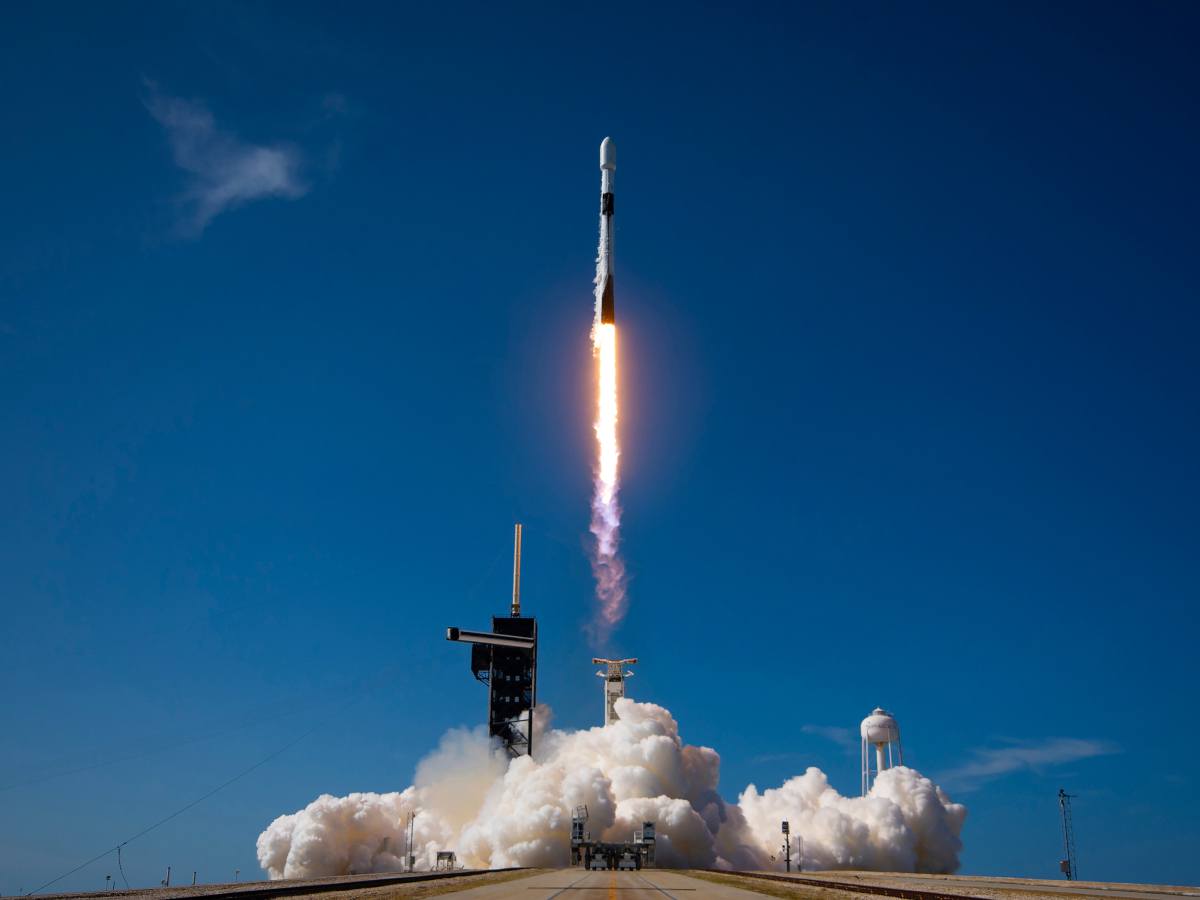The MTG-S1 satellite, which was aboard the launch, will be used to provide improved data for weather forecasting and storm prediction.
The European Space Agency (ESA) and SpaceX successfully launched a rocket yesterday (1 July) containing instruments for two ESA Earth observation missions.
Aboard a SpaceX Falcon 9 that launched from Cape Canaveral in Florida, US, was the second of the Meteosat Third Generation (MTG) satellites along with the first instrument for the Copernicus Sentinel-4 mission.
Shortly after liftoff, ground control acquired the satellite’s signal, followed by confirmation of the deployment of the satellite’s solar arrays, which according to the ESA indicated that the mission now has sufficient power.
The MTG-Sounder (MTG-S1) satellite – the first hyperspectral sounding instrument placed in geostationary orbit by a European-led mission – is designed to provide improved data for weather forecasting and storm detection. The MTG mission already has one satellite in orbit – the MTG-Imager.
The MTG-S1 is equipped with an instrument called an infrared sounder, which comprises a complex imaging spectrometer that can detect the distribution, circulation and temperature of water vapour in the atmosphere.
According to the ESA, the instrument is designed to capture data on temperature, humidity, wind and trace gases that are then used to generate 3D maps of the atmosphere, which the ESA says improves the accuracy of MTG’s weather prediction.
More specifically, the MTG-S1 will provide a profile of temperature and moisture at different altitudes over Europe every 30 minutes as well as data on aerosols, ozone, nitrogen dioxide and sulphur dioxide over Europe and Africa every 60 minutes.
Phil Evans, director general of the European Organisation for the Exploitation of Meteorological Satellites (EUMETSAT) – which is operating the MTG spacecraft – said that MTG-S1 will provide data that will support the detection of signs of atmospheric instability “even before clouds begin to form”.
“Combined with data from the MTG imaging satellites it will, for the first time, offer a space-based view of the full life cycle of convective storms,” he said. “This will provide tremendous support to national meteorological services in carrying out their vital work, helping to save lives, reduce disruption and strengthen resilience.”
Also on board
Mounted on the MTG-S1 satellite is an instrument that will be used for the Copernicus Sentinel-4 mission, which is the first mission to monitor European air quality from geostationary orbit.
The instrument will use its ultraviolet, visible and near-infrared (UVN) imaging spectrometer – which will be in a fixed position focused on Europe and northern Africa – to measure pollution every 60 minutes.
The UVN spectrometer will provide high-resolution data on gases that affect the quality of the air we breathe, including a wide range of atmospheric trace gases and pollutants such as nitrogen dioxide, ozone, sulphur dioxide and formaldehyde.
“Sentinel-4 brings something truly new to the Copernicus family of Sentinel Earth observation satellites, and we at ESA are incredibly proud to have contributed to bringing the mission through development to launch,” said Giorgio Bagnasco, the ESA’s Sentinel-4 project manager.
“This mission has an incredibly sensitive and precise instrument, which will transform how we predict atmospheric pollution and understand air quality trends.”
Toward the end of last year, the ESA launched the Copernicus Sentinel-1C satellite on a Vega-C rocket from Europe’s Spaceport in French Guiana, with the satellite designed to deliver high-resolution radar imagery to monitor Earth’s changing environment.
Don’t miss out on the knowledge you need to succeed. Sign up for the Daily Brief, Silicon Republic’s digest of need-to-know sci-tech news.
